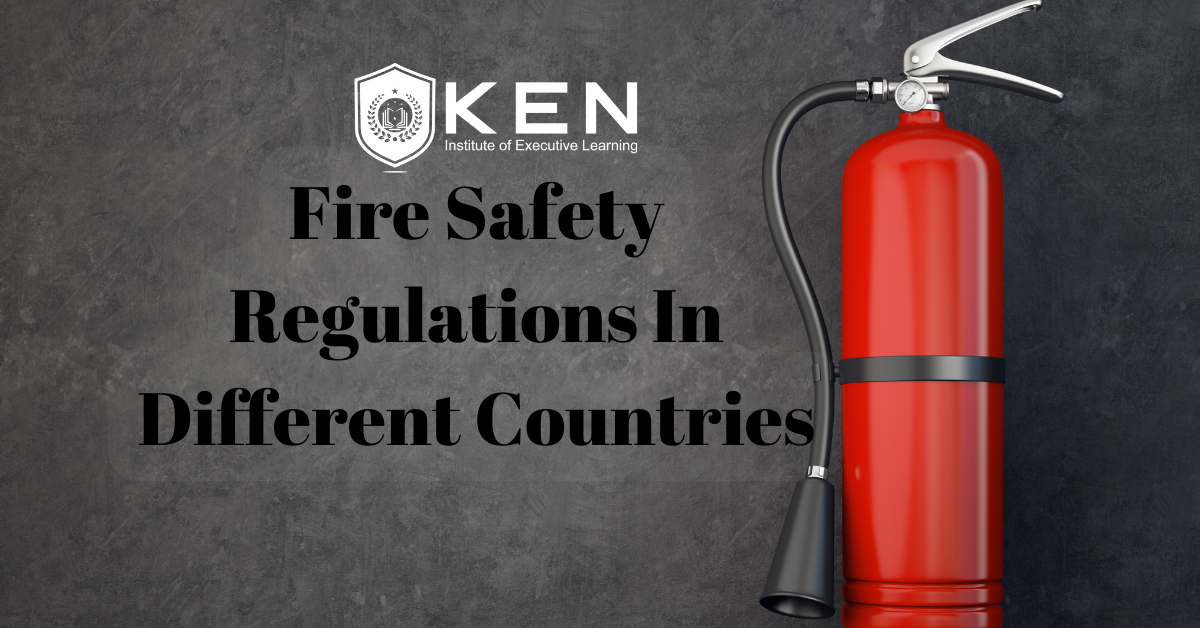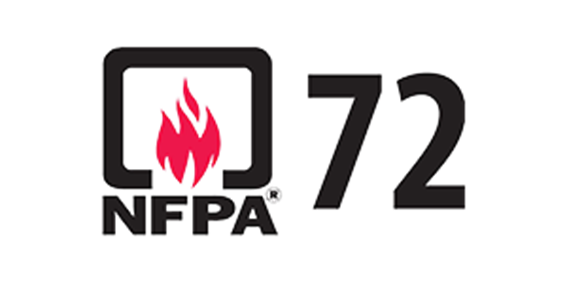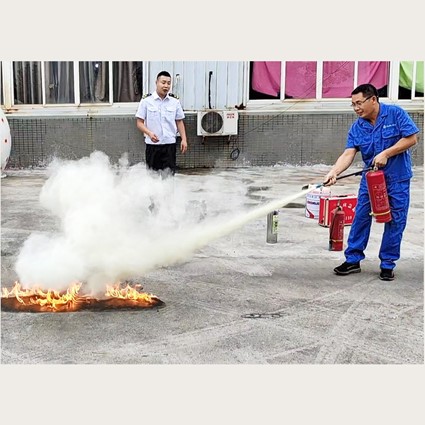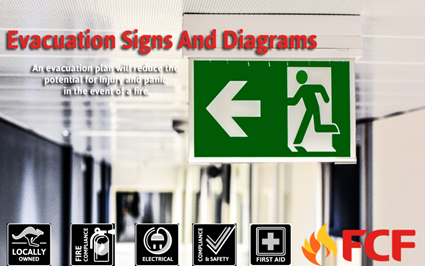
Fire Safety Regulations vary widely across different countries, reflecting diverse approaches to ensuring safety in buildings, public spaces, and industrial settings. Each country’s regulations reflect its specific challenges and priorities, aiming to protect lives and property through effective fire safety measures.
Here’s an overview of fire safety regulations in few countries:
UNITED STATES
Following are the Fire Safety Regulations from US accepted by most of the countries:
- National Fire Protection Association (NFPA)
The NFPA develops codes and standards to minimize the risk and effects of fire. Key standards include the NFPA 101 (Life Safety Code) and NFPA 72 (National Fire Alarm and Signalling Code).
NFPA 101 (Life Safety Code): This code addresses building design, construction, operation, and maintenance to provide a reasonable level of safety from fire. It covers requirements for egress routes, fire protection features, occupancy types, and emergency planning.
NFPA 72 (National Fire Alarm and Signalling Code): This code sets the standard for the installation, performance, and maintenance of fire alarm systems, including smoke detectors, alarms, and emergency communication systems.

- International Building Code (IBC)
Fire Protection Systems: The IBC mandates the installation of fire suppression systems such as sprinklers in various building types, depending on their occupancy and use.
Materials and Construction Methods: The code specifies fire-resistant materials and construction techniques to prevent the spread of fire and ensure structural integrity during a fire event.
- Occupational Safety and Health Administration (OSHA)
OSHA provides regulations for workplace fire safety.
Emergency Action Plans (EAP): Employers must develop EAPs outlining procedures for evacuations, reporting fires, and accounting for all employees after an evacuation.
Fire Prevention Plans (FPP): These plans focus on identifying and controlling fire hazards in the workplace, maintaining fire suppression equipment, and training employees on fire prevention.
2. UNITED KINGDOM
The key aspects of the UK’s Fire Safety Regulations are:
- Building Regulations 2010 (Part B)
Means of Escape: Regulations require buildings to have sufficient means of escape and marked escape routes fire detection and alarm systems, and fire resistance of structures.
Fire Resistance: Structural elements such as walls, floors, and doors must meet fire resistance requirements to prevent fire spread and maintain structural stability.
- Regulatory Reform (Fire Safety) Order 2005
This order places responsibility on building owners and managers to implement appropriate safety measures.
Fire Risk Assessments: Building owners and managers must conduct regular fire risk assessments to identify potential fire hazards and implement measures to mitigate them.
Fire Safety Measures: These include maintaining fire exits, ensuring fire alarms and extinguishers are operational, and providing fire safety training to occupants.
- British Standards (BS 9999)
Code of Practice: BS 9999 offers a risk-based approach to fire safety design, allowing for flexibility in achieving fire safety goals while considering the specific use and occupancy of the building.
3. EUROPEAN UNION
Fire Safety Regulations developed and accepted by EU states are:
- EU Construction Products Regulation (CPR)
Certification: Construction products must be tested and certified for fire performance to ensure they meet safety standards.
CE Marking: Products with the CE marking indicate compliance with EU fire safety requirements.
- European Standards (EN)
EN 13501-1: This standard classifies construction products and building elements based on their reaction to fire, considering factors such as combustibility, smoke production, and flaming droplets.
- Fire Safety Engineering (FSE)
An approach used in several EU countries, focuses on performance-based design rather than prescriptive codes.
Performance-Based Design: Many EU countries adopt FSE approaches that focus on achieving specific fire safety performance goals rather than adhering strictly to prescriptive codes. This allows for innovative design solutions while ensuring safety.
4. JAPAN
Japan concentrates on the following Fire Safety Regulations:
- Building Standards Act
Fire Resistance of Materials: This act mandates the use of fire-resistant materials in building construction to prevent the spread of fire and ensure structural stability.
Fire Alarms and Evacuation Routes: Buildings must be equipped with fire alarms and clearly marked evacuation routes to facilitate safe evacuation during a fire.
- Fire Service Act
Fire Drills: Overseen by the Fire and Disaster Management Agency, this act mandates regular fire drills to ensure occupants are familiar with evacuation procedures.

Fire-Fighting Equipment: Buildings must have adequate fire-fighting equipment, such as extinguishers and hose reels, accessible to occupants.
5. AUSTRALIA
Australia incorporates the following Fire Safety Regulations in its fire code:
- National Construction Code (NCC)
Fire Safety Provisions: The NCC includes detailed fire safety requirements for building design and construction, such as fire resistance, compartmentation, and egress routes.
Fire Safety Systems: Mandatory installation of fire detection and alarm systems, sprinkler systems, and smoke control systems in various building types.

- Australian Standards (AS)
AS 3745: This standard outlines planning for emergencies in facilities, including the development of emergency procedures, fire warden training, and regular fire drills including the development of emergency procedures and training for occupants.
6. CANADA
- National Building Code of Canada (NBC)
Technical Provisions: The NBC sets out fire safety provisions for building design and construction, including fire resistance ratings, fire separation requirements, and means of egress.
Sprinkler Systems: The code mandates the installation of sprinkler systems in certain types of buildings, such as high-rise residential buildings and care facilities.
- Canadian Electrical Code (CEC)
Electrical Safety: The CEC provides regulations to prevent fire hazards associated with electrical installations, including wiring, equipment, and maintenance practices.
- Provincial and Territorial Fire Codes
Fire Safety Practices: These codes, based on the model National Fire Code of Canada (NFC), regulate fire safety practices in existing buildings, such as fire alarm systems, emergency lighting, and maintenance of fire protection equipment.
7. INDIA
- National Building Code (NBC) of India
Fire and Life Safety: Part 4 of the NBC provides comprehensive guidelines for fire prevention, fire protection, and life safety in building design and construction.
Fire Safety Measures: These include fire detection and alarm systems, fire-fighting equipment, and emergency evacuation procedures.
- State Regulations
Local Adaptations: In India, individual states may have additional regulations to address specific fire safety concerns, such as high-density urban areas or industrial zones.
8. CHINA
- Code for Fire Protection Design of Buildings (GB 50016)
Comprehensive Requirements: This national standard provides detailed requirements for fire protection design, including fire resistance, fire separation, and evacuation routes.
Sprinkler Systems: Mandatory installation of sprinkler systems in various types of buildings to control and extinguish fires.
- Fire Protection Law
Legal Responsibilities: This law establishes the legal responsibilities of building owners, managers, and occupants for fire prevention and control, including regular fire drills and maintenance of fire-fighting equipment and evacuation procedures.
- UNITED ARAB EMIRATES
Fire safety regulations in the UAE are stringent and aimed at ensuring the safety of residents and buildings. Here are some key aspects:
- Building Codes
The UAE has specific building codes that outline requirements in construction, including materials used, fire resistance ratings, and escape routes.
Fire Prevention Systems: Buildings must be equipped with fire prevention systems. These systems must be regularly inspected and maintained.
Emergency Procedures: Buildings are required to have clear emergency procedures in place and training for occupants on fire safety protocols.
- Regulatory Authorities
Fire safety regulations are enforced by local authorities such as the Civil Defense departments in each emirate. These authorities conduct inspections to ensure compliance with fire safety standards.
Occupancy Limits and Safety Measures: Occupancy limits are based on the type of building and its fire safety features. For example, high-rise buildings may have specific requirements for fireproofing and evacuation procedures.
Penalties for Non-Compliance: Non-compliance with fire safety regulations can result in fines, closure of premises, or other legal actions.
These regulations are continually updated to incorporate new technologies, materials, and methods, reflecting an evolving understanding of fire safety by fire prevention agencies of the relative states. Compliance with these regulations often involves collaboration between architects, engineers, fire safety experts, and regulatory authorities.
Help! Keep yourself, your team, and your assets safe, just by keeping an eye open for Safety Regulations.
For top-level Industrial safety courses, more advice, or any personalized information, get in touch with us
Get in touch with us at: info@keneducation.in
Visit our website: www.keneducation.in
Let’s connect on Facebook, YouTube, LinkedIn, and Instagram.

